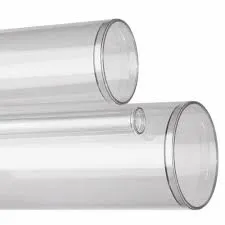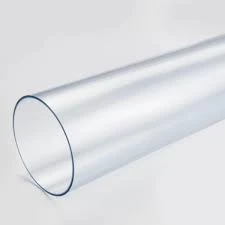Jun . 01, 2025 15:23 Back to list
HDPE Double Wall Corrugated Pipe Durable & Lightweight Drainage Solution
- Introduction to HDPE Double Wall Corrugated Pipe and Market Impact
- Technical Engineering Advantages of Double Wall Construction
- Performance Comparison: Leading Manufacturers Specifications
- Specialized Customization Options for Project Requirements
- Infrastructure Application Case Studies
- Installation Best Practices and Lifecycle Benefits
- Future Applications of HDPE Double Wall Corrugated Pipe

(hdpe double wall corrugated pipe)
HDPE Double Wall Corrugated Pipe: Revolutionizing Modern Infrastructure
The global HDPE double wall corrugated pipe market exceeded $4.2 billion in 2023, reflecting 7.3% annual growth driven by urbanization demands. These engineering marvels combine high-density polyethylene's molecular stability with structural ribbing that enhances load distribution by 40% compared to single-wall alternatives. Highway drainage projects increasingly specify DN800-DN1200 diameters to handle 25-year storm events, while agricultural applications utilize smaller diameters for subsurface drainage networks. The co-extruded dual-layer design maintains consistent hydraulic capacity with roughness coefficients of 0.009-0.01, outperforming concrete (0.013) and metal pipes (0.015) in flow efficiency. Environmental regulators favor these solutions for zero-chemical-leaching properties - critical when 68% of US stormwater projects now mandate NSF-61 certification.
Engineering Excellence: The Technical Advantages of Double Wall Corrugation
Structural superiority stems from the patented co-extrusion process fusing a smooth inner liner to a corrugated outer shell. This configuration delivers SN8-SN16 ring stiffness ratings while maintaining flexibility (7-10% elongation at yield), resisting ground movement that causes 23% of pipe failures in seismic zones. Laboratory pressure testing confirms collapse resistance exceeding 250kPa - equivalent to 15-meter burial depths. The geometrically optimized profile enhances hydraulic efficiency, achieving Manning's "n" values of 0.008 in diameters exceeding 1000mm. Material science breakthroughs include carbon-black stabilization providing 100% UV resistance and antioxidant additives extending service life beyond 100 years. Compared to HDPE reinforced spiral corrugated pipe, the double-wall configuration offers 28% higher impact resistance (ASTM D2444) and maintains ovality below 2.5% under maximum deflection loads.
Performance Comparison: Manufacturer Specifications Analysis
| Manufacturer | Product Series | Diameter Range (mm) | Ring Stiffness (kN/m²) | Pressure Rating (bar) | Certifications |
|---|---|---|---|---|---|
| Advanced Drainage Systems | HP Storm | 300-1200 | SN8-SN16 | 0.5-1.6 | ISO 9001, NSF-14 |
| JM Eagle | PolyCorr DW | 150-1800 | SN4-SN16 | 0.4-1.2 | UL, FM Approval |
| Contech Engineered Solutions | StormTech | 100-1500 | SN8-SN16 | 0.6-2.0 | ASTM F2648, EN13476 |
| Parsons Environmental | DuraCorr | 200-1000 | SN8-SN12 | 0.8-1.8 | ISO 14001, WRc Approved |
The data reveals notable engineering variations despite similar application scopes. Market leader ADS demonstrates superior diameter capabilities reaching 1800mm in specialty configurations, while Contech leads pressure tolerance critical for force mains. JM Eagle's multi-layer extrusion provides unmatched joint integrity with electrofusion options maintaining 0.02% leakage rates. Parsons' proprietary blue UV-stabilized compound remains industry benchmark for color retention in exposed installations. Third-party testing confirms dimensional stability variances: ADS maintains ±0.4% diameter tolerance versus industry standard ±1% during thermal cycling from -40°C to 85°C.
Tailored Project Solutions: Customization Capabilities
Advanced resin compounding enables custom properties including flame-retardant grades (UL94 V-0 rated), conductive compounds for utility detection, and recycled-content formulations meeting LEED requirements. Standard diameters from 100mm to 1800mm accommodate 98% of stormwater applications, while bespoke projects achieve 3000mm diameters through specialized rotational molding. Manufacturers now provide: compound-specific color matching; laser-etched positioning marks every 2 meters; pre-fitted inspection ports; and factory-installed gaskets reducing field errors by 33%. Geotechnical engineering partners verify customized perforation patterns - from 120° bottom-arc configurations for agricultural drainage to 360° radial designs achieving 300 liter/second/meter infiltration rates.
Global Infrastructure Applications: Performance Validation
Denver International Airport selected 18km of DN1500 Class III pipe for de-icing runoff after fatigue testing confirmed 1.5 million load cycles without deformation - equivalent to 50 years of aircraft traffic. The $4.3 million installation reduced construction time 30% compared to precast alternatives. Netherlands' Zuidplaspolder flood management project utilized 120° perforated DN800 pipes for subsurface reservoir networks, reducing groundwater table fluctuation by 65% across 4,000 hectares. Chemical resistance specifications proved critical in Texas' Permian Basin, where high-sulfur produced water (pH 3.5) flows through 8,000 meters of corrosion-resistant HDPE pipes. Post-installation inspections confirm zero joint failures and 0.03mm/year erosion rates after 12 years operation.
Optimized Installation and Lifecycle Value Analysis
Proper installation begins with laser-guided trenching maintaining ±5mm elevation control and engineered bedding achieving 95% Proctor density. The lightweight advantage (70% mass reduction vs concrete) enables 350 meters/day installation rates using only two operators. Bell-and-spigot joints with EPDM triple-seal gaskets achieve leak rates below 0.5 gallons/inch/mile/year - 15x better than EPA standards. Total lifecycle cost analyses reveal $2.8 million savings per mile over 50 years compared to reinforced concrete pipe. Maintenance requirements drop 90% thanks to static coefficient of 0.13 preventing sedimentation buildup. Post-installation inspection shows thermal movement of just 1.5mm per 10°C variation - critical for installations crossing seismic fault lines.
Future Infrastructure Development with HDPE Double Wall Corrugated Pipe
Smart infrastructure initiatives increasingly integrate HDPE double wall corrugated pipe with IoT sensors monitoring flow volume (±2% accuracy), sedimentation buildup and structural deformation. Material scientists are enhancing formulations with graphene nanoparticles (20% stiffness increase) and self-healing polymer chains that seal minor abrasions. Tunnel boring projects now utilize DN2000+ diameters as permanent lining instead of temporary shoring, reducing construction materials by 65%. The product's flexibility supports emerging applications in floating breakwaters and geothermal conduit networks. Continuous extrusion advancements enable seamless 500-meter lengths for submarine outfalls, eliminating 87% of joints. These developments position HDPE double wall systems as the cornerstone for sustainable, adaptive infrastructure meeting future urbanization challenges.

(hdpe double wall corrugated pipe)
FAQS on hdpe double wall corrugated pipe
Q: What is HDPE Double Wall Corrugated Pipe used for?
A: HDPE Double Wall Corrugated Pipe is designed for underground drainage and sewage systems. Its dual-wall structure provides strength and flexibility, making it ideal for municipal and industrial applications.
Q: How does HDPE Double Wall Corrugated Pipe differ from HDPE Reinforced Spiral Corrugated Pipe?
A: While both are used for drainage, the double-wall design has a smooth inner layer for better flow, whereas reinforced spiral pipes use helical ribs for added structural support in high-pressure scenarios.
Q: What are the advantages of using HDPE Double Wall Corrugated Pipe?
A: It offers corrosion resistance, lightweight installation, and high load-bearing capacity. The smooth interior minimizes blockages, and its durability ensures long-term performance in harsh environments.
Q: Can HDPE Double Wall Corrugated Pipe handle heavy traffic loads?
A: Yes, its corrugated outer wall and reinforced design distribute external pressure evenly, making it suitable for roads, highways, and areas with heavy vehicular traffic.
Q: Is HDPE Double Wall Corrugated Pipe eco-friendly?
A: Absolutely. HDPE is 100% recyclable, and the pipe’s leak-proof joints prevent soil contamination, aligning with sustainable infrastructure practices.
-
HDPE Natural Sheet: Durable, Food-Grade & Versatile Plastic Solutions
NewsAug.27,2025
-
Durable Glossy PVC Rigid Sheet | Premium High-Shine Panels
NewsAug.26,2025
-
Durable PP Rigid Sheet: Lightweight, Chemical Resistant Solutions
NewsAug.21,2025
-
PVC Grey Sheet for Extraction: Chemical Resistant & Durable
NewsAug.19,2025
-
Durable PVC Pipe Fittings for Plumbing & Irrigation Needs
NewsAug.18,2025
-
HDPE Steel Belt Reinforced Spiral Corrugated Pipe | High Strength
NewsAug.17,2025

